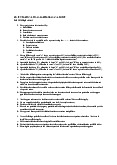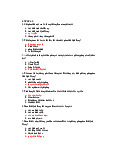




Preview text:
3. International business situation
3.1. Nowadays situation.
De Beers controls about 40% of the global rough diamond market. Although De Beers
owned nearly 90% of the diamond market at one point, they own less than 35% of the
diamond supply today. Total revenue increased to $3.6 billion (30 June 2021: $2.9
billion), with rough diamond sales rising to $3.3 billion (30 June 2021: $2.6 billion).
Rough diamond sales volumes totalled 15.3 million carats (30 June 2021: 19.2 million
carats),with the prior period benefiting from very strong demand recovery following the
impact of Covid-19 in 2020. Rough diamond production increased by 10% to 16.9
million carats (30 June 2021: 15.4 million carats), reflecting a strong operational
performance and higher planned levels of production to meet continued strong demand
for rough diamonds, while the first quarter of 2021 was affected by particularly high
rainfall in Botswana and at Venetia. Consumer desire for natural diamonds continues to
be robust in key consumer markets. However, a deterioration in global macro-economic
conditions and significant inflation in the key markets could result in reduced consumer
spending impacting demand for diamond jewellery. Despite this, the combination of
ongoing sanctions against Russia, decisions from a number of US-based jewellery
businesses to apply their own restrictions on purchases of Russian diamonds, and
continued development of provenance initiatives has the potential to underpin continued
demand for De Beers’ rough diamonds in the medium to longer term. Meanwhile, the
longer term evolution of the diamond value chain continues, including a sustained focus
on inventory balance, the efficient distribution of diamonds throughout the pipeline,
increased online purchasing, and a greater focus on the provenance and sustainability
credentials of companies and their products. Despite the near term challenges and
uncertainties, the long term outlook for diamond jewellery demand remains positive,
while the global supply of rough diamonds is expected to slightly decline owing to the lack of recent discoveries.
Despite the limited players in diamond industry, De Beers group have to compete with
major competitors such as ALROSA (Russia), Rio Tinto (Australia), BHP Billiton
(Australia). In addition to mining rivals, De Beers has had retail rivals for its De Beers
Diamond Jewelry. Harry Winston, Tiffany, and Cartier were listed as the top three rivals,
particularly in the bridal market. Compared to De Beers, these three brands have been
around in the global retail market for significantly longer. In case you forgot, Harry
Winston, Inc.'s original location was in New York City in 1932. Tiffany & Co. launched
its jewelry business in 1853, and Cartier produced its first timepieces in 1904. And in
recent year, De Beers, the world’s top diamond producer by value, saw sales jump by
18% in the second cycle of 2022 compared to the same period last year, attesting to the
industry’s consolidated recovery from the first pandemic-induced shutdowns.The miner,
which has benefitted from a steady recovery in the diamond market, is said to have hiked
prices by about 8% in January. It had already increased the price of its rough diamonds
throughout much of 2021 as it sought to recover from the first year of the pandemic when
the industry came to a near halt.
London--The De Beers Group has acquired luxury conglomerate LVMH Moët Hennessy
Louis Vuitton’s 50 percent share in the De Beers Diamond Jewellers retail chain, giving it
full ownership of the company. The growth and performance of the chain have fluctuated
since it launched, particularly in the U.S., where it currently has four locations, according
to its website. Last year, the company moved its New York flagship store to a new
location on Madison Avenue to complete “the repositioning of the brand in the U.S.”At
the close of 2016, De Beers Diamond Jewellers had 34 stores in 17 markets worldwide.
De Beers Group CEO Bruce Cleaver said that integrating the De Beers Diamond
Jewellers brand and store network will help the company deliver an “even more
differentiated diamond offering” alongside its Forevermark diamond brand. Last month,
De Beers said that Forevermark had passed 2,000 retail doors across the world, building
off of a 14 percent increase in the number of doors in 2016 alone and expansion into
Hungary, South Korea, and Thailand. The De Beers Group today announced the creation
of a new company called Lightbox Jewelry, which will begin marketing a new brand of
lab-made diamond jewelry under the name Lightbox in September. offers consumers
high-quality, stylish jewelry designs at prices lower than existing lab-grown fashion
jewelry designs. Lightbox lab-grown diamonds will retail prices from US$200 for a
single-carat gem to US$800 for a one-carat stone. This line will bring something new and
innovative to the jewelry sector, featuring lab-grown pink, blue and white diamonds in a
selection of necklace designs and Affordable earrings.
3.2. The Evolution of De Beers’ Strategy
In contrast to 2008, when De Beers had to take on more debt to weather the financial
crisis, the company emerged from Covid-19 stronger than before, and it may even have
benefited from the limitations on Russia-based Alrosa — its biggest competitor. The $491
million in underlying earnings it reported in the first six months of 2022 was its best half-
year profit since 2011, and the $3.54 billion in revenue was its highest since 2014. But
Cleaver looks beyond the financials and these are the strategies that bring about
significant changes to de beer's structure, brand positioning, messaging, and relationships.
First is a call for cooperation – a call to strengthen cooperation and partnership in trade.
What's important to De Beers is to show people that we're going to change, listen more, and collaborate more.
Second, special stones for sale - That doesn't mean the company is set up the way it is,
especially in terms of how to sell specials. Last year, it partnered with viewfinder
company Diacore to purchase a special 39.35-carat blue rough stone from Petra
Diamonds for $40.2 million and share in the profits from the polishing. The De Beers
Blue, 15.10 carat, polished in vivid fancy blue the result of that rough diamond, grossed
$58.7 million at Sotheby's Hong Kong. The two companies have also partnered to
purchase five blue rough diamonds from Petra in 2020, with the resulting polished stones
expected to fetch more than $70 million at Sotheby's in November.
Third, it's technology, Clever emphasizes that technology is central to improving De
Beers rough sales. In fact, technology is driving change across all business units. De
Beers business, Cleaver said. That includes its mining operations, where it is tackling the
challenge of "lighter mining," using less water and energy to be more environmentally
friendly. He also emphasized that the Tracr program — De Beers' blockchain-based
traceability platform — is gaining attention and will allow companies to prove the
provenance of their De Beers supply.
Fourth, is building forever, all of which leads to the strong focus on sustainability that
De Beers has adopted in recent years and the need to showcase one man's diamond
sourced from morality. They are leading ethical practices, working together for a
prosperous community, protecting the natural world, and promoting equal opportunity.
“These are incredibly important not only to our business but to our employees, partners
and communities across all aspects of our operations.
Fifth is cleaning up the mess, The evolution of that message parallels Cleaver advocating
for more brands across the industry as well as cleaning and strengthening the De Beers
brand. Key to that growth was taking full ownership of its name in early 2017, when it
bought 50% of the De Beers Diamond Jewelers Company (DBDJ) owned by LVMH. The
company sought to capitalize on its strong name recognition as much as possible. The
most notable was the retail deal with LVMH and the later rebranding of its retail
operation De Beers Jewelers (DBJ). It also rebranded Forevermark as De Beers
Forevermark, and the strategy extended beyond its retail operations to tie the entire group
together into a single “De Beers” corporate identity with a common goal. “I wanted to
define a more holistic business strategy: run the company as a business, not three separate
silos,” Cleaver said. "I think we've been pretty successful in getting there."
Sixth, to stay brilliant Over the past half-decade, it has evolved into a more integrated,
holistic business with every employee, no matter what part of the company they work has
With that structure, Cleaver is confident the company can double down on innovation –
as he claims to have done with Tracr and Lightbox – strengthening relationships with
trade and government and lead the industry on big issues like sustainability Tài liệu tham khảo
https://www.debeersgroup.com/media/company-news/2022/interim-financial-results-for- 2022
https://rapaport.com/analysis/the-evolution-of-de-beers-strategy/
https://www.mining.com/de-beers-latest-sale-shows-demand-remains-strong




